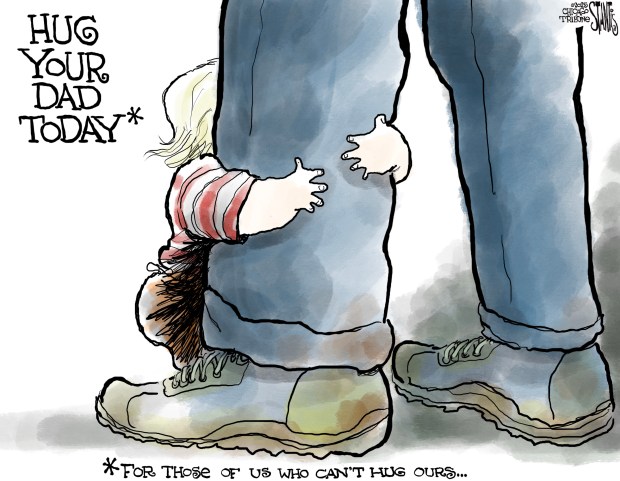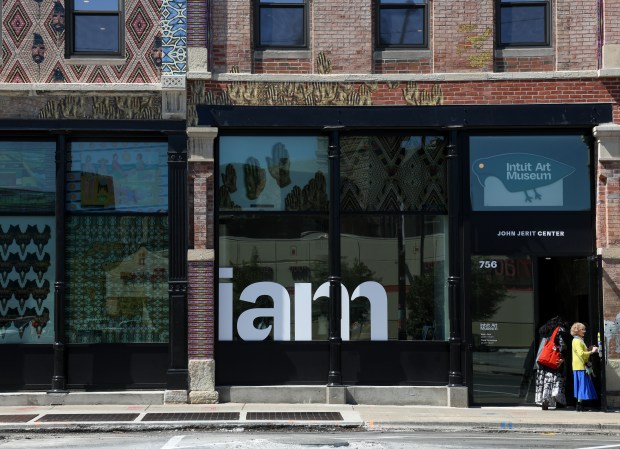After President Joe Biden’s decision to drop out of the race, I’m reaffirming my prediction that despite primary turnout, it’s wrong to write off young voters.
While Chicago saw low turnout during its uncompetitive Democratic primary, young people will vote when there’s something to show up for. Now we’re seeing that come to life. If recent social media activity is any indication, Generation Z will turn out to vote in November. Candidates can shore up support by using their social media platforms to appeal to Gen Z’s policy preferences.
Vice President Kamala Harris has garnered countless views by leaning into singer Charli XCX’s endorsement and adopting a digital presence mirroring the flippant attitude of the album of the summer, Charli XCX’s “brat.” She has also seen herself become a meme thanks to her “You think you just fell out of a coconut tree?” comment.
At the Republican National Committee, former President Donald Trump recruited a group of celebrities, including Amber Rose and Jason Aldean, aimed at appealing to younger, conservative voters. Trump’s gotten millions of views on podcasts with celebrities and athletes.
Both candidates are making strong plays for younger audiences while avoiding cringey mistakes of past campaigns. They won’t make Hillary Clinton’s mistake with “Pokemon Go to the polls,” but to win votes, they must amplify their policy positions.
So, what do young voters care about? It’s not just couches and coconuts.
Harvard University’s Youth Poll indicates the majority of young voters aren’t as radical as news and even social media portray — nor are they as ideologically rigid. When evaluating matchups between randomized issues, they found young voters actually prioritized inflation, housing, jobs, health care and women’s reproductive rights ahead of what the media portray young people caring about most: the Israel-Hamas war, student debt and climate change.
And Vox reported young voters were disgruntled with President Joe Biden’s administration for ignoring their top economic concern: lower prices.
With young voters paying attention, here are the policy positions the candidates and parties must focus on to earn the next generation’s votes.
Housing affordability: In 2022, nearly 60% of Gen Zers were unduly burdened by housing costs, as reported by Axios, spending more than 30% of their income on rent or mortgage payments. Since May 2021, rents increased 24% in the Chicago area, according to Crain’s Chicago Business, leaving an increasing number of young adults struggling.
The best way to reduce housing costs is by building more housing. Candidates can encourage cities to rezone for alternative housing options such as granny flats and multifamily units — just as Chicago is pushing right now — and to ease restrictions on commercial-only zoning. To reduce home and building prices, they can also cut government approval times that add cost and reduce regulations such as parking minimums and aesthetic requirements.
High tuition costs and good jobs: College was advertised to many Gen Zers as the only way to secure a high-paying job. The high cost of college tuition was supposed to be offset by higher earnings, but job openings and market salaries haven’t kept pace with inflation.
Candidates can advocate for nontraditional forms of education, expanding opportunities for two-year programs, apprenticeships and trade schools, which can lead to lifelong, high-paying jobs. Additionally, they should consider legislation that removes degree and occupational licensing requirements for jobs such as hair braider, cosmetologist and burglar alarm installer.
As of 2023, the average Gen Z borrower had an outstanding student loan balance of nearly $25,000, Bankrate reported. Candidates should lobby to extend the student loan forgiveness benefit past 2025, which empowers businesses to pay off $5,250 in loans, tax-free.
Public transportation: High car and maintenance prices have left young people driving less. Candidates could support young people’s futures by investing in proven, reliable, safe public transportation options. Amtrak recently opened a line from St. Paul, Minnesota, to Chicago. It turned a profit in less than two weeks.
Historically, the major political parties have dismissed young people’s concerns, but there are 41 million eligible young voters in this election, representing one-fifth of the electorate. More than half are expected to vote. Politicians can’t afford to ignore them.
Gen Z grew up online amid high-stakes elections, making them uniquely engaged and politically active. The first election in which Gen Z was old enough to account for the entire 18-to-24-year-old voting bloc was the 2022 midterm, and nearly 30% cast a ballot. This was an unprecedented participation rate for a first midterm and significantly higher than what past generations — including millennials, Gen X and boomers — cast at that age.
This November, the winner of the election might be the candidate who best communicates about the issues that matter to Gen Z and young voters.
Micky Horstman is the communications associate for the Illinois Policy Institute and a writer for Young Voices.
Submit a letter, of no more than 400 words, to the editor here or email letters@chicagotribune.com.




